Birding: a Real Option for City Kids
By Dan Scali
As an immature iteration of a long-standing committee, Golden Gate Bird Alliance’s Youth Education Committee hatched in September 2022 and continues program development for new audiences, most notably middle school students. One pilot program finding early success is the committee’s collaboration with San Francisco-based youth organization, Real Options for City Kids (R.O.C.K.). R.O.C.K. has been providing out of school programming to historically underserved K–8 youth in the Visitacion Valley neighborhood since 1994. Within R.O.C.K. is a perfect audience for our outreach, the Saturday Adventure Leadership Team (S.A.L.T.). This team is exclusively for middle schoolers who are held to high expectations in their commitment to each other, staff, environmental stewardship, and exposure to new outdoor experiences.
Our committee was excited for this partnership and despite concerns that volunteers might shy away from teens full of testosterone, interest was very high. With an important goal of promoting social and environmental justice, we were glad to sign on several Spanish speakers and others with relatable backgrounds as the R.O.C.K. youth to volunteer.

We kicked things off with S.A.L.T. at Heron’s Head Park in September of last year. Though we were about a month too early for wintering ducks, the park’s varied habitats: bay, pond, beach, rocky shore, tidal marshes, channels, and sloughs, were likely to provide excellent opportunities for newer birders to see large aquatic species up close. One hurdle was that S.A.L.T. turnout is unpredictable — families have a lot going on — and waking up early on the weekend to go bird watching is maybe not at the top of the list for most 12 to 14-year-olds. Nevertheless, three co-leaders, Clay Anderson, Bianca Escalante, and myself, were ready to flow with the outgoing tides. Six boys arrived with staff members Franny, a graduate of S.A.L.T., and Cassandra, ready for an adventure. We distributed brand-new, recently donated 10×42 Vortex binoculars to all, made introductions, and headed out.
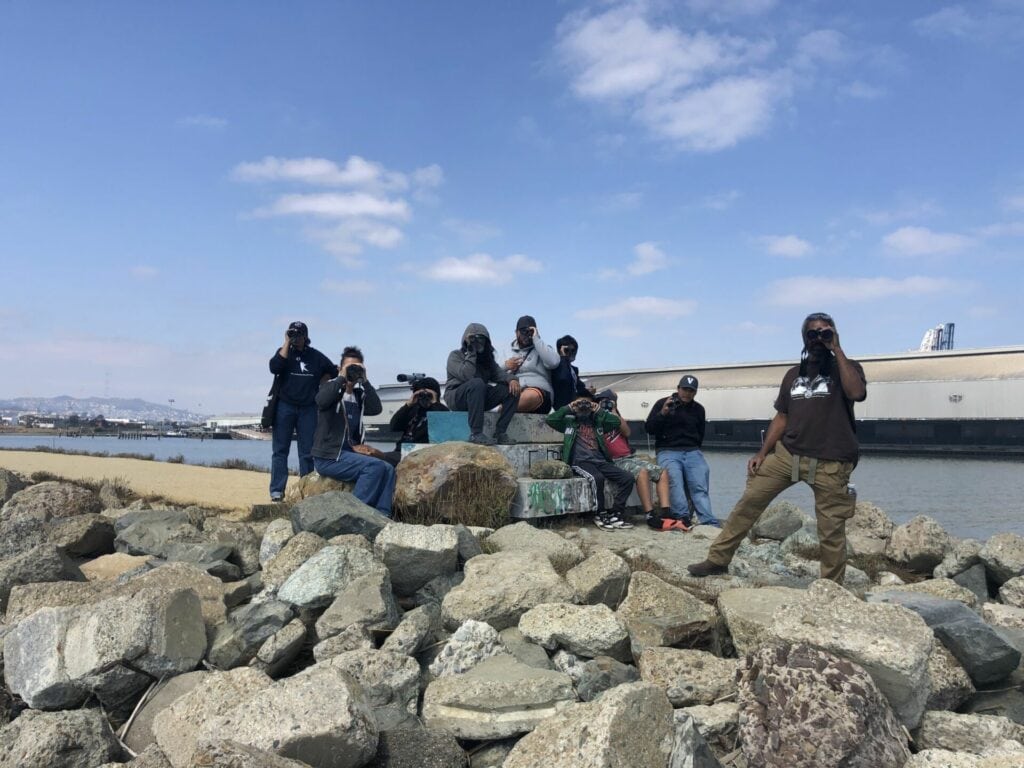
Our first invasive plant, star thistle, and our first native plant, Oregon gum plant, were much easier to observe than our first bird. And yet, the tiny Least Sandpiper was plenty confiding and gave all of the beginners great looks at its bright yellow legs. Moving on we found many opportunities to discuss bird ID, behavior, life history, and to connect with the ecology around us. The birds put on an excellent show. We were able to point out large birds like Great Blue Herons and Turkey Vultures, brilliantly glowing close-ups of Snowy Egrets and Black Oystercatchers, and gliding Black-necked Stilts. After two hours, everyone from R.O.C.K. had the hang of their binoculars, could use a spotting scope, and had been introduced to a vibrant ecosystem. Franny, whose enthusiastic leadership helped keep students motivated, was so impressed by the voice and appearance of the Black Oystercatcher that he had everyone calling them Franny’s Oystercatcher by the time of the closing circle. The fact that the youth seemed more energized at the end by pizza than earlier while birding had us wondering whether R.O.C.K. would sign up with GGBA again. When we connected with their director, Natalie, she shared that the staff called it “a smash hit,” and reported that Clay “was dropping some serious knowledge.”
As excellent an outing as the first field trip was, it felt like a warm up compared to our next adventure. R.OC.K.’s Director Natalie, was super excited to join this time. She had high hopes that the Heron’s Head turnout was an anomaly, reassuring us that “no girls” was a first, and that on average, 10 youth had been attending Saturdays this year. Just to be sure, she added trash pickup to the S.A.L.T. agenda, something students need to complete a certain number of times to graduate.
Optimistic from the “smash hit” kudos, we got together a team of five co-leaders to try and provide maximum individualized attention. The morning of, we learned that indeed turnout was high, so much so that public transit was the only option. After 1.5 hours on multiple buses, 14 youth, 2 staff, and one director, got off the 30 bus at the end of the line, the Sports Basement across from Crissy Field. We were delighted to see five boys from the first trip had joined for a second experience.
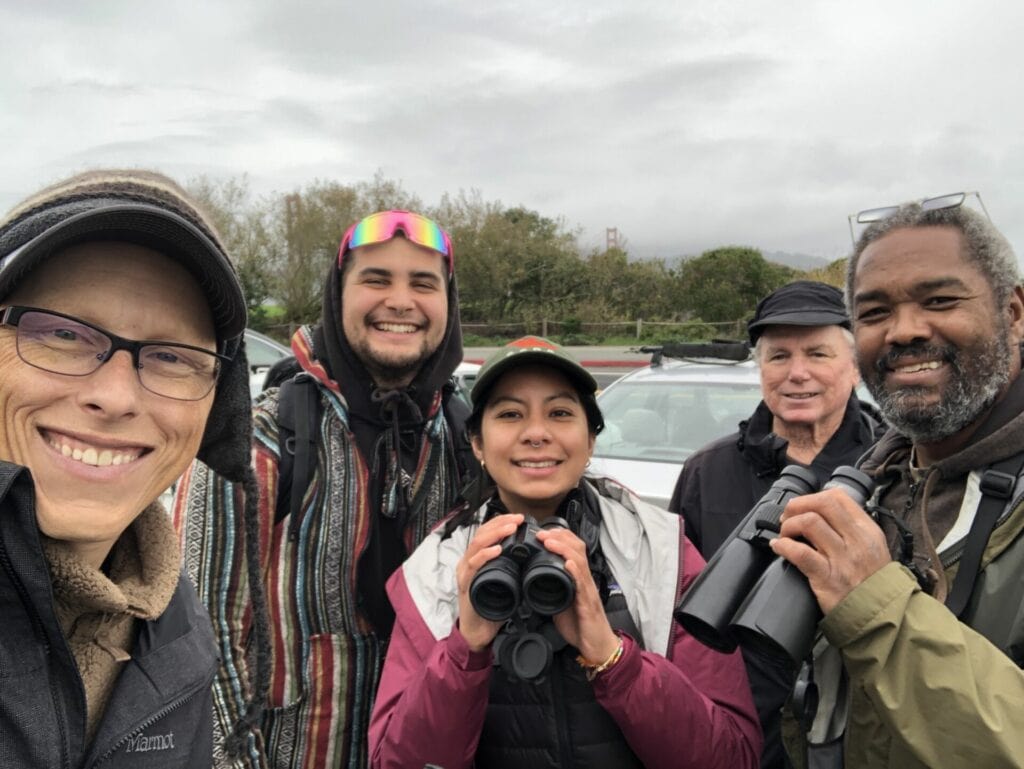
Heading to the meadow for opening circle, wherein we greet each other and outline the day’s plan, we got close-up views of our first bird, a Great Blue Heron stalking through the shoreline pickleweed. Clay circled everyone up and we shared our names and something we were hoping to see. Just “birds” was the common refrain but when asked what is something you know about birds, more than one youngster mentioned the words “beautiful” and “pretty.” One boy, Bryan, said that we eat them for food. A boy that was a little more reluctant to participate, Ben, wanted to see a coyote. Next, a new volunteer to Golden Gate Bird Alliance, Dmitrius Rodriguez, had us pairing up for a couple fun icebreakers. We also acknowledged the Yelamu, first people of San Francisco, who had an important relationship with the area we were in, as evidenced by a shellmound that remains near the east shore of the lagoon.
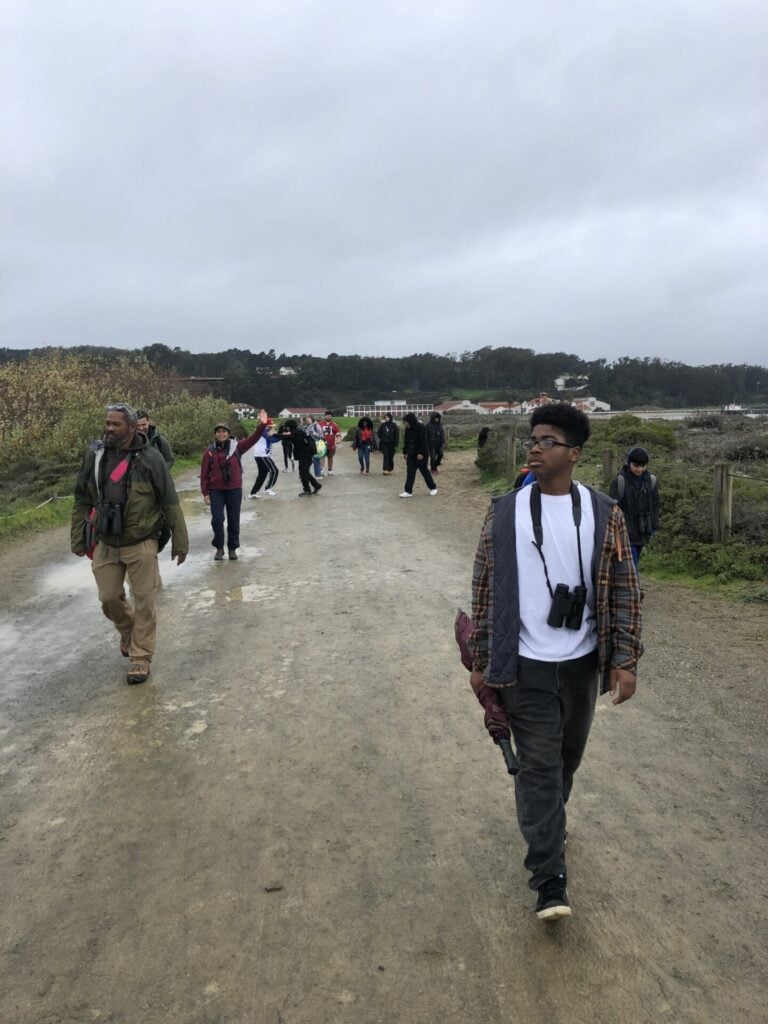
Binoculars and field guides followed and we finally set out to see (and hear) what Crissy had in store for us. Dan encouraged folks to practice focusing by pointing their “bins” toward the Golden Gate Bridge and began introducing views with the scope. We were at the west end of the lagoon and Dmitrius prompted some of the youth carrying field guides to pick a favorite bird they wanted to see. Someone chose a Bufflehead and 3 seconds later, there one was, prospecting for a meal. Other birds nearby: Ruddy Ducks and Egrets.
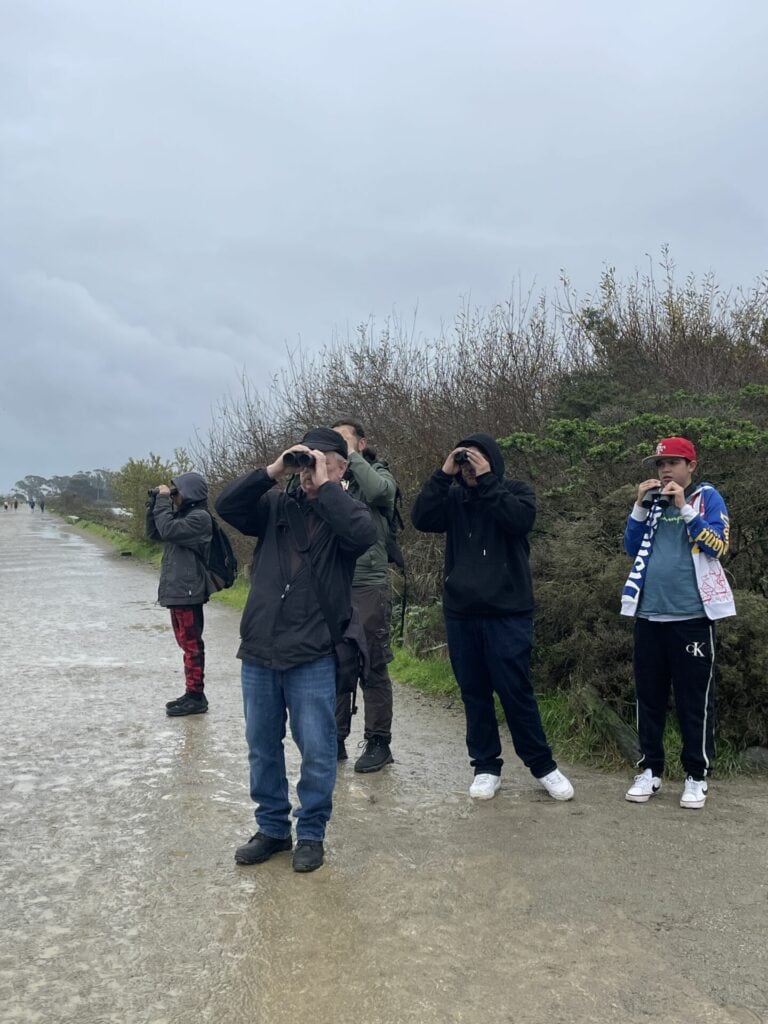
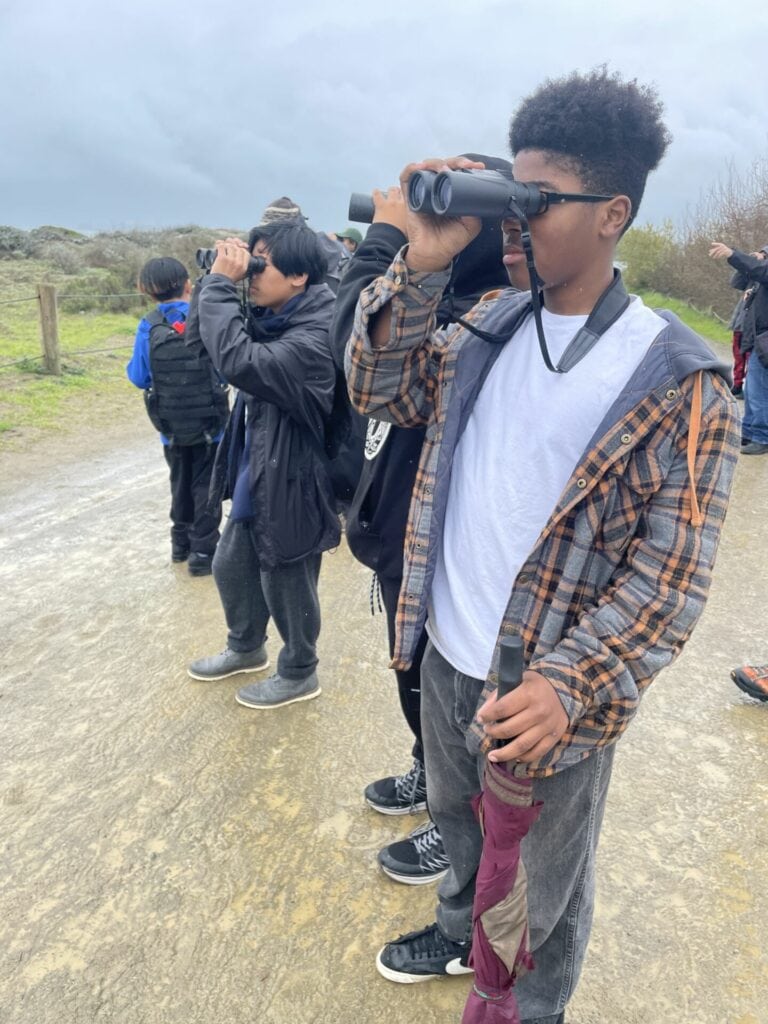
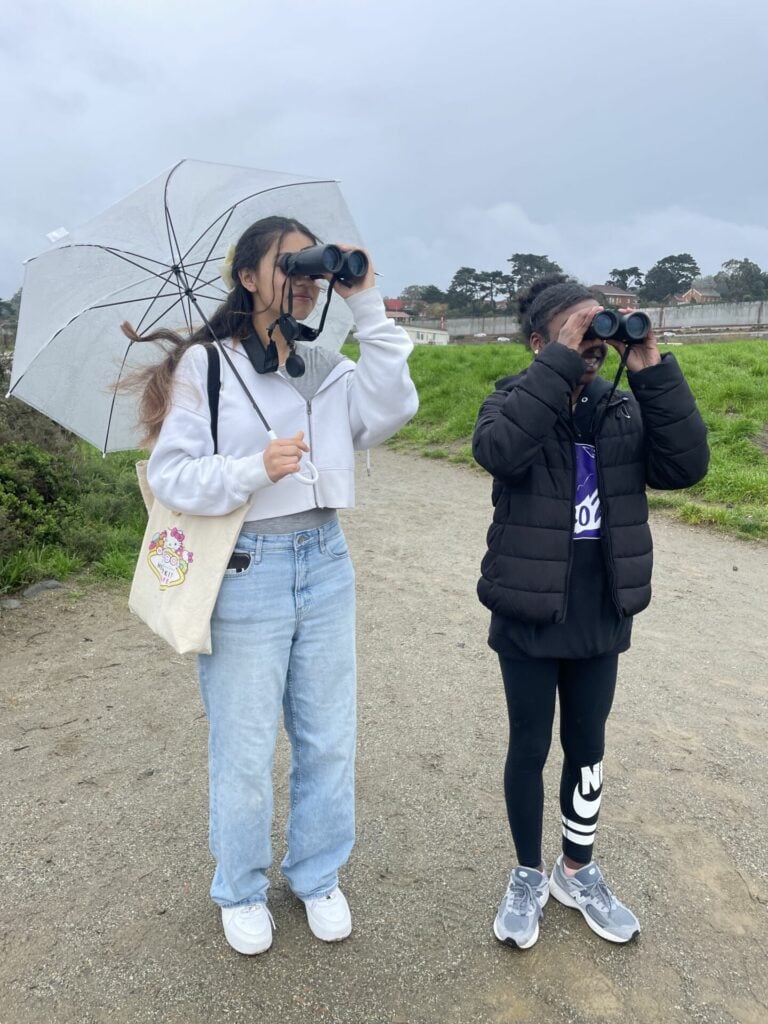
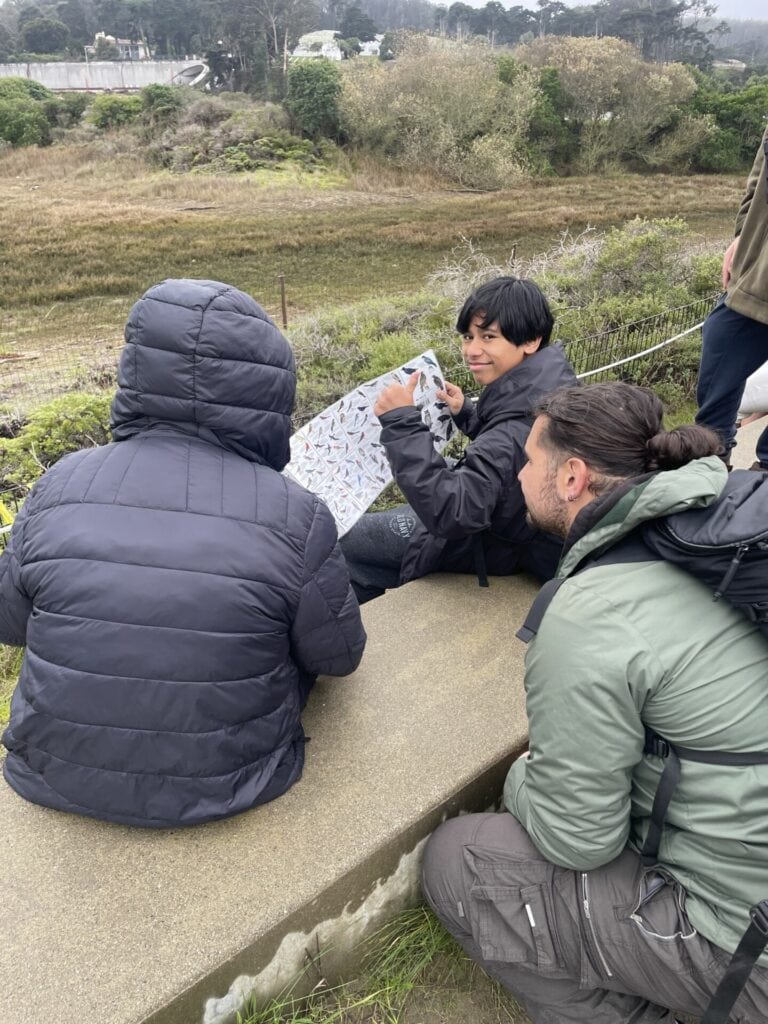
A little further on was the west sandbar, always reliable for Western gulls and Double-crested Cormorants. We watched as a handful of California Brown Pelicans made rapid vertical dives, stopping short of splashing, then dropping landing gear to settle on the sand; a highly dramatic event. At our next perch, Clay turned our attention to a decomposing seal he had spotted on the near shore two weeks earlier. The middle schoolers were fascinated – the skull was very visible – and they put up with the smell for quite some time. Many mentioned the seal as a highlight later.
Before we got too far from the Marin Headlands we circled up again to hear from co-leader Natalie Tan-Torres, a volunteer bird bander for Golden Gate Raptor Observatory (GGRO). They shared about the process of banding raptors, why banders don’t use gloves, migration data, and their favorite raptor to work with, the American Kestrel. One youngster, Mariyah, exclaimed to Natalie afterwards, “Wow, lady, you have a really cool job!”
The subject of kestrels gave Alan Hopkins a chance to connect the day’s field trip to the youths’ school, Visitacion Valley Middle, which is just down the hill from a winter resident American Kestrel’s favorite telephone wire perch. The youth were all ears for this and other histories from Alan, including how he remembered Crissy Lagoon when it was just a parking lot. Along with sharing his decades of knowledge about San Francisco aquatic birds, Alan also had many stories about how places, policies, and the environment changed in his birding lifetime. He talked about Rachel Carson’s “Silent Spring” and the impact one person can have on a whole population of Brown Pelicans.
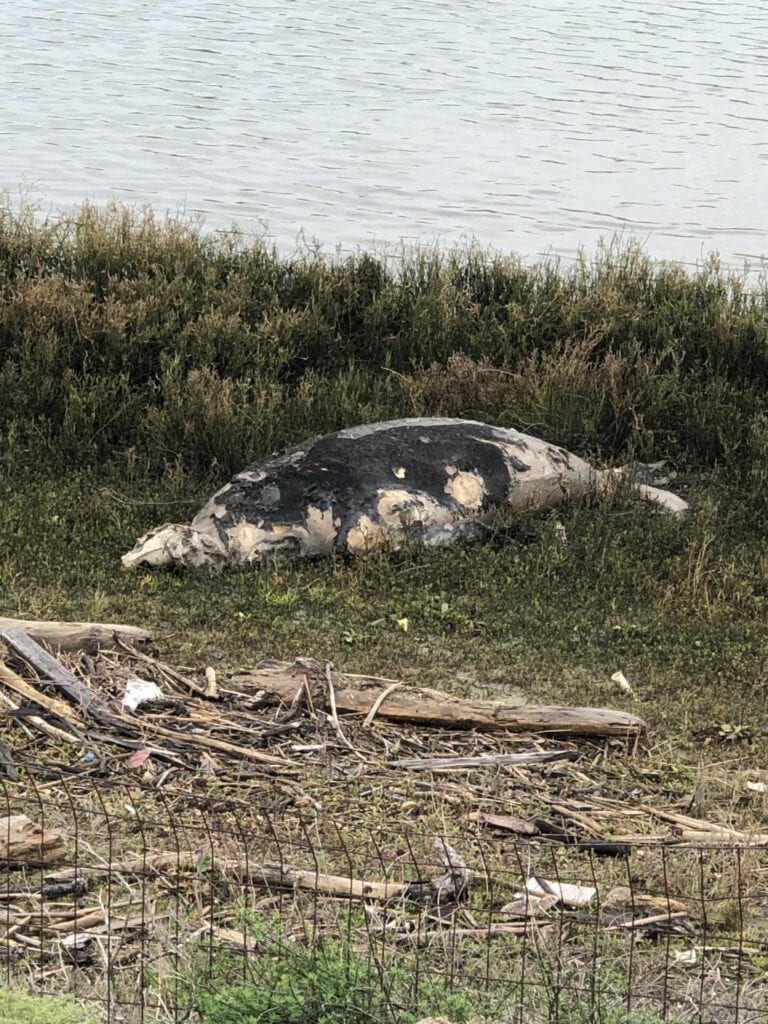
Next was a stop on the beach. Western Grebes diving were challenging to get on. We saw sailboat racing and big waves. The kids loved running around, seeing the water, and playing in the sand. It was almost time to close so we headed down the beach and around to the bridge over the inlet. Our last bird was a great one, being the uniquely billed Long-billed Curlew probing deep in the sand. We also finally got looks at an actual raptor, a Red-tailed Hawk.

Clay closed with advice he gives all young people.
“Right now is the time to pay attention to what’s all around us. Take advantage of these experiences and the knowledge nature affords us because it is FREE and can inspire us to be more conscious around our futures,” he shared. “It’s available if you want it.
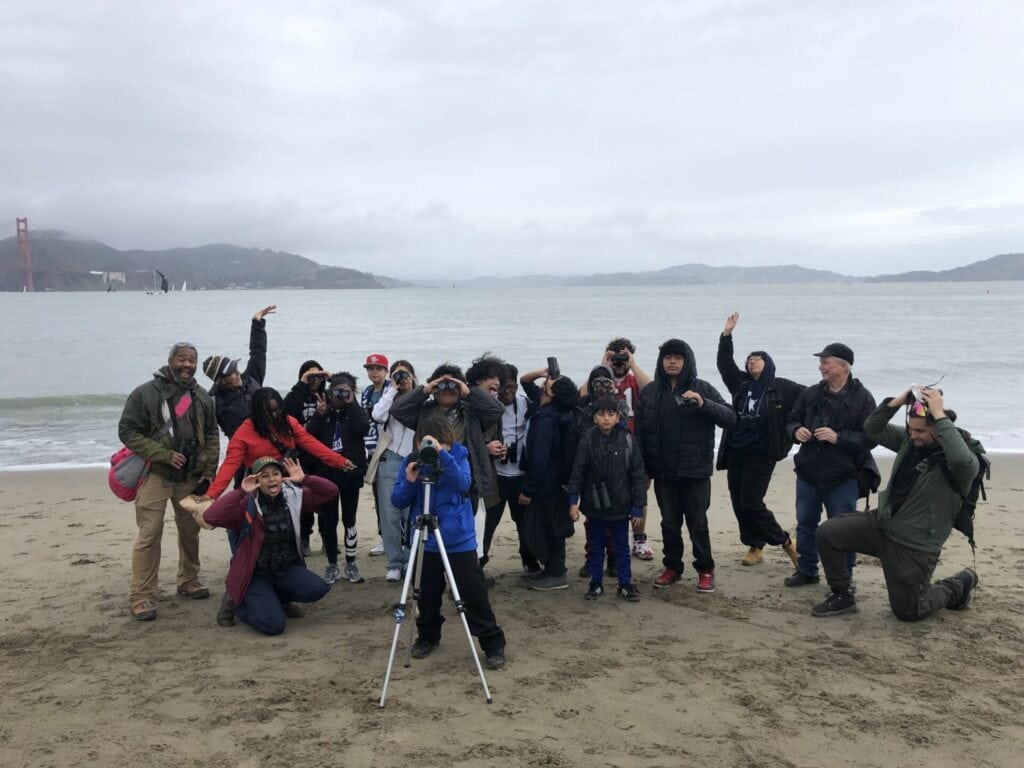
Dan Scali is a Spanish/English bilingual educator at the California Academy of Sciences who spends quite a lot of time birding in San Francisco. He is a member of two GGBA committees: the SF conservation committee and the Education committee.
